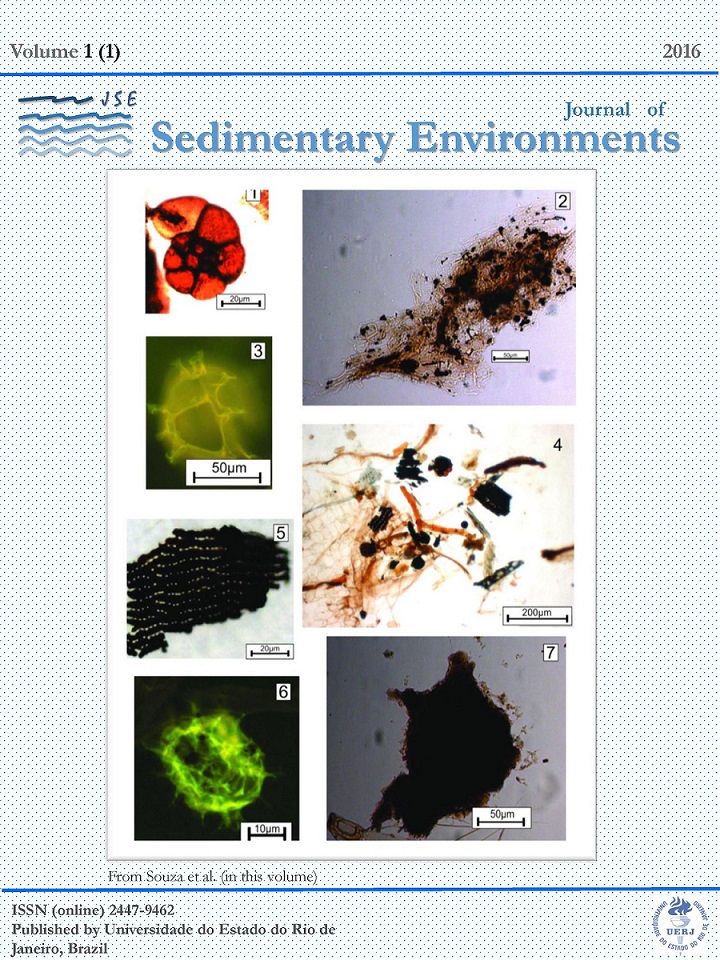OIL GENERATION POTENTIAL ASSESSMENT AND PALEOENVIRONMENTAL INTERPRETATION OF IRATI FORMATION (LOWER PERMIAN) IN NORTHWESTERN OF PARANÁ BASIN (BRAZIL)
DOI:
https://doi.org/10.12957/jse.2016.23388Keywords:
total organic carbon, rock-eval pyrolysis chemostratigraphy, oil generation potential, depositional environment, Lower PermianAbstract
Total organic carbon (TOC), total sulfur (S) and Rock-Eval pyrolysis analyzes were performed in 41 samples collected along the SP-60-PR core, from the Irati Formation, northwestern of Paraná Basin.
This work aims to show how organic matter content evolved vertically in the Irati Formation and therefore to contribute to the identification of the most attractive levels to generate hydrocarbons, in thermally immature sediments.
The results of these analyses allowed to recognize sharp changes in the types of organic matter and paleoenvironmental conditions, giving rise to eight chemical-stratigraphic units, labeled as A, B and C (Taquaral Member) and D, E, F, G and H (Assistência Member). The units A and C display low organic carbon content and predominance of organic matter type IV, which indicate an oxic environment.
The unit B, with higher TOC content, has organic matter predominantly of type II and should be associated to a disoxic environment.
The Assistência Member, mainly with organic matter type II, is differentiated from the previous units by their sharply higher TOC content and hydrogen index values, suggesting a more restricted environment, characterized by disoxic to anoxic conditions.
The bituminous shale of the units E and H have the highest TOC, sulfur and hydrogen index values, representing the units where conditions of the autochthonous organic matter (type II) preservation was more efficient (anoxic environment).
Despite being found organic matter thermally immature in the Assistência Member, the layer with the highest generation potential is the unity H.
The comparison with data of other studied wells evidenced a strong reduction in the potential generator of the Irati Formation toward the north of Paraná Basin.
Downloads
Issue
Section
License

Journal of Sedimentary Environments (JSE) is licensed under a Creative Commons Attribution-Noncommercial-Share Alike 4.0 International License.

